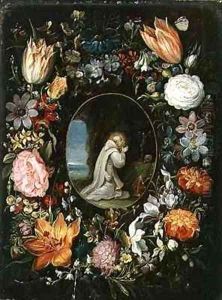F. & Brueghel, J. Francken Paintings
F. Brueghel and J. Francken were two notable Flemish painters from the late 16th and early 17th centuries, significant contributors to the rich tapestry of Northern Renaissance and Baroque art. Their works are often explored together due to their overlapping themes, periods, and the familial connections they share within the dense network of Flemish artists.
Frans Francken the Younger, born in 1581, was a key figure in the Francken family of artists, which played a crucial role in Antwerp's art scene. He was particularly renowned for his intricate cabinet paintings which depicted historical, allegorical, and biblical scenes, often on a small scale that invited close inspection. His work not only exemplified the meticulous detail characteristic of Flemish painting but also reflected the shifting tastes of the period, incorporating elements of the emerging Baroque style with its emphasis on drama and movement.
Jan Brueghel the Elder, born in 1568, was another luminary of this era, often called 'Velvet' Brueghel for his ability to paint detailed textures that resembled velvet. As the son of Pieter Bruegel the Elder, Jan carried forward his father's legacy, albeit with a focus that leaned more towards intricate landscapes, floral still lifes, and allegorical scenes. His collaboration with Peter Paul Rubens on several works demonstrated the interconnectedness of Flemish artists and highlighted their ability to merge landscape and figure painting in innovative ways.
The intersection of the Francken and Brueghel families, through marriage and professional collaborations, exemplified the rich, interwoven fabric of Flemish art. Their works, often familial collaborations, underscored the era's artistic trends, including the detailed observation of nature, a fascination with the exotic and the allegorical, and the burgeoning interest in human emotion and the natural world's beauty.
F. Brueghel and J. Francken's contributions to art were marked by their ability to blend the minute with the magnificent, capturing both the complexity of human narratives and the splendor of the natural world. Despite their deaths in 1625 and 1616, respectively, their legacy endured, influencing generations of artists and continuing to enchant viewers with their detailed and dynamic compositions.
